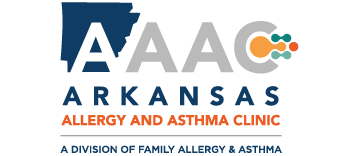Why It’s Important to Keep Your Epinephrine Auto-Injector With You At All Times

Severe allergic reactions to food items, insect stings, and other allergens can occur unexpectedly. Be prepared for one of these reactions by having your auto-injectors with you at all times.
Epinephrine is the first-line treatment for an anaphylactic reaction.
An injection of epinephrine, or adrenaline, is the standard emergency treatment for people with anaphylaxis. The helpful beta-adrenergic properties of epinephrine cause bronchodilation (increasing airflow in the lungs), increases myocardial output, and reduces the immune response from mast cells and basophils (types of white blood cells).
However, an epinephrine injection is a temporary treatment for a severe allergic reaction. Sometimes requiring two injections just to buy you enough time to seek proper care. Therefore, people who self-inject epinephrine to treat anaphylactic reaction still need to seek medical attention immediately.
How to use an epinephrine auto-injector
You can usually follow these steps to use an epinephrine self-injector.
- Remove the injector’s safety cap.
- Push the auto-injector against the target muscle.
- Hold the auto-injector in place for several seconds before removing it.
Each epinephrine auto-injector may have a slightly different design; it’s important to learn how to use your specific auto-injector. Our injection room staff can help train you if you have any questions.
The danger of biphasic anaphylactic reactions
The American College of Allergy, Asthma, and Immunology (ACAAI) notes that an anaphylactic reaction may be followed up to 12 hours by another anaphylactic episode. This secondary anaphylactic reaction can occur with no further exposure to the allergen and may affect 20 percent of people experiencing anaphylaxis. Anaphylaxis often begins with a feeling of faintness, flushing, and throat tightening. Consumption of peanuts in particular by children with severe peanut allergies has been linked to episodes of anaphylaxis. It is crucial to recognize if you have an allergy to avoid the allergen as much as possible.
Meanwhile, an allergic person may not have a severe reaction upon first exposure to the allergen. However, each allergic reaction can be different and may be more severe on subsequent exposures to that allergen.
Food allergies and anaphylactic reactions
The following foods cause nearly 90 percent of food allergies: tree nuts (i.e., almonds, pecan, hazelnut, walnuts, cashews, and pistachios), peanuts, milk, eggs, shellfish, wheat, and soy products.
Pre-packaged meals or take-out restaurants may not list contained ingredients. An allergic person, therefore, may be unaware that their meal contains a risky food item. In turn, the result of eating that meal may result in an anaphylactic episode. Therefore, a person with a severe food allergy should carry an epinephrine injector at all times in case of accidental ingestion of the risky food item. It is also beneficial to discuss the ingredients and any food restrictions with the restaurant before ordering.
The skin test as a preferred allergy diagnostic tool
If you think you may be allergic to a food item, then a doctor will probably conduct a skin test (via. prick, scratch, or puncture) to ascertain whether or not this is the case. Doctors have used skin tests to identify allergens for more than 100 years, and the results are often available within minutes. A skin-prick test where doctors apply the diluted allergen using a small, disposable plastic device to prick, scratch, or puncture the skin surface. A skin test and your patient history can identify an allergy, but an oral food challenge in our offices may be recommended to confirm the allergy.
In Little Rock or Conway, you can obtain a food allergy test at various healthcare facilities. However, Arkansas Allergy and Asthma have well-trained physician specialists who can both diagnose and treat diverse allergies (as well as administer a food allergy test).
Insect Stings
You may not experience an allergic reaction to a bee or wasp sting, yet still experience an allergic reaction the second time you are stung. However, the second experience of a bee or wasp sting can result in a sudden anaphylactic reaction.
However, the formation of IgE-mediated antibodies (as a function of the immune system) typically does not occur during the first contact with the allergen because the allergen-specific antibodies have not yet formed.
- Mild allergic symptoms include pain at the site of insect sting, an area of red, raised skin at the site of insect sting, and slight swelling around an insect sting area.
- Moderate symptoms of an allergic reaction to a bee sting include severe redness and/or swelling around the sting that can worsen within 24 hours to a size of a diameter of about 4 or more inches. Meanwhile, anaphylaxis is considered a severe insect sting reaction.
- If you have a severe insect sting reaction, you should carry an epinephrine injector.
Contact
By choosing Arkansas Allergy and Asthma for allergy diagnosis and treatment (as well as asthma treatment), less interruption of your normal daily routine may be possible. We are an trusted choice for a local allergy clinic that can treat children and adults. Contact us today for an appointment!


